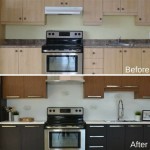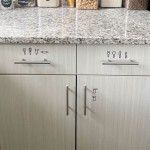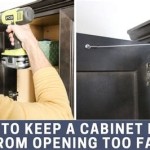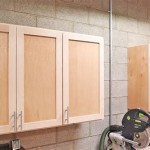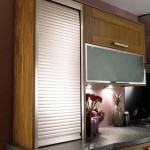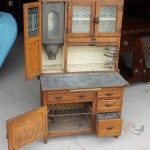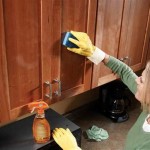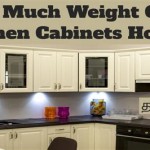How to Install Kitchen Cabinet Sliding Shelves: A Comprehensive Guide
Kitchen cabinets, while offering valuable storage space, often present challenges in accessibility. Items stored at the back of the cabinet, particularly on lower shelves, can be difficult to reach and retrieve. The installation of sliding shelves, also known as pull-out shelves or roll-out shelves, provides a practical solution to this problem. These shelves glide smoothly, bringing stored items within easy reach and maximizing the usability of cabinet space. This article provides a comprehensive guide to installing kitchen cabinet sliding shelves, covering the necessary preparations, tools, step-by-step instructions, and troubleshooting tips.
Before commencing the installation process, careful planning and preparation are crucial for a successful outcome. This involves accurately measuring the cabinet interior, choosing the appropriate type of sliding shelves, and gathering all the required tools and materials. Rushing through these preliminary steps can lead to errors, wasted materials, and ultimately, a less-than-satisfactory result.
Key Point 1: Preparation and Measurement
The initial and arguably most critical step is to accurately measure the interior dimensions of the kitchen cabinet where the sliding shelf will be installed. Precise measurements are essential to ensure that the shelf fits correctly and operates smoothly. Consider the following aspects during the measurement process:
Cabinet Width: Measure the inside width of the cabinet at both the front and the back. Cabinets are not always perfectly square, so taking measurements at multiple points ensures the shelf will fit properly throughout. The width must accommodate the shelf itself plus the side-mounted hardware (slides or runners). Note that some slides require a specific clearance on each side. Consult the manufacturer's specifications for the chosen sliding shelf hardware to determine the necessary width.
Cabinet Depth: Measure the inside depth of the cabinet from the front edge to the back wall. This measurement determines the maximum depth of the sliding shelf. It's important to account for any obstructions, such as pipes or electrical wiring, that might be present at the back of the cabinet. The depth of the shelf should be slightly less than the cabinet depth to allow for smooth sliding and avoid collisions.
Cabinet Height: While the height of the cabinet itself is less critical, the available vertical space within the cabinet will influence the placement of the sliding shelf. If installing multiple shelves, consider the height of the items to be stored on each shelf and ensure there's adequate clearance above each shelf.
Obstructions: Carefully inspect the interior of the cabinet for any obstructions that might interfere with the installation or operation of the sliding shelf. Common obstructions include pipes, electrical wiring, and cabinet frame components. Address these obstructions before proceeding with the installation. Minor obstructions might be accommodated by modifying the shelf or adjusting its placement. More significant obstructions might necessitate choosing a different location or modifying the cabinet itself, actions that should be carefully considered and potentially handled by a professional.
Once the cabinet is measured, the appropriate type and size of sliding shelf must be selected. A variety of options are available, ranging from basic wire shelves to more elaborate wooden shelves with full-extension slides. The choice will depend on factors such as budget, desired aesthetic, load-bearing capacity, and ease of installation.
Finally, gather all the necessary tools and materials. This includes:
- Measuring tape
- Pencil
- Drill with various drill bits
- Screwdriver (matching the screws provided with the sliding shelf hardware)
- Level
- Safety glasses
- Dust mask
- Sandpaper (optional, for smoothing rough edges)
- Wood filler (optional, for patching screw holes)
Key Point 2: Installation Steps
With the cabinet measured, the shelves selected, and the tools gathered, the actual installation process can begin. The following steps provide a general guide, but it's crucial to consult the specific instructions provided with the chosen sliding shelf kit, as installation procedures may vary slightly depending on the manufacturer and model.
Step 1: Prepare the Cabinet Interior: Thoroughly clean the inside of the cabinet, removing any existing items, dust, or debris. If necessary, lightly sand any rough edges or surfaces that might interfere with the smooth operation of the sliding shelf. If there are existing screw holes from previous hardware, fill them with wood filler and allow it to dry completely before sanding smooth.
Step 2: Mark the Shelf Position: Determine the desired height of the sliding shelf within the cabinet. Use a level and pencil to draw a horizontal line on both sides of the cabinet to indicate the position of the shelf supports or runners. Accurate marking is critical to ensure the shelf is level and operates correctly. Consider the height of the items that will be stored on the shelf when determining its position.
Step 3: Install the Shelf Supports or Runners: Most sliding shelf kits come with side-mounted supports or runners that attach to the inside walls of the cabinet. Align the supports or runners with the marked lines and use a drill to pre-drill pilot holes. Pre-drilling pilot holes prevents the wood from splitting when inserting the screws. Attach the supports or runners to the cabinet walls using the screws provided with the kit. Ensure the supports or runners are securely fastened and level.
Step 4: Attach the Slides to the Shelf (If Applicable): If the sliding shelf kit includes separate slides that need to be attached to the bottom of the shelf, follow the manufacturer's instructions for this step. Align the slides with the shelf and use screws to secure them in place. Ensure the slides are properly oriented and positioned according to the instructions. The slides must be parallel to each other for smooth operation.
Step 5: Install the Shelf: Carefully slide the shelf into the cabinet, aligning the slides (if applicable) with the supports or runners. Ensure the shelf slides smoothly and evenly. If the shelf binds or catches, check the alignment of the supports or runners and adjust as necessary. In some cases, a slight shim may be needed to correct minor alignment issues.
Step 6: Test the Shelf: Once the shelf is installed, test its operation by sliding it in and out several times. Check for any binding, scraping, or other issues. Address any problems before loading the shelf with items. It's also a good idea to test the load-bearing capacity of the shelf by placing a few heavy items on it and observing its performance.
Key Point 3: Troubleshooting Common Issues
Even with careful planning and execution, some issues may arise during the installation of kitchen cabinet sliding shelves. The following troubleshooting tips can help resolve common problems:
Shelf Doesn't Slide Smoothly: If the shelf binds or catches when sliding in or out, the most likely cause is misalignment of the supports or runners. Check the alignment with a level and adjust as needed. Ensure that the supports or runners are securely fastened to the cabinet walls and that there are no obstructions interfering with the movement of the shelf. Lubricating the slides with a silicone-based lubricant can also improve smoothness.
Screws Stripping or Not Holding: If the screws provided with the kit are stripping or not holding properly, the pilot holes may be too large. Try using slightly larger screws or filling the existing holes with wood filler and redrilling smaller pilot holes. Ensure that the screws are the correct type and length for the material of the cabinet walls.
Shelf Not Level: If the shelf is not level, the supports or runners may not be installed at the same height. Use a level to verify the alignment of the supports or runners and adjust as needed. Shimming one side of the shelf can also correct minor levelness issues.
Shelf Too Wide or Deep: If the shelf is too wide or deep to fit properly in the cabinet, it may be necessary to trim it down to size. Use a saw to carefully trim the shelf, ensuring that the cut is straight and clean. Take care not to damage the hardware or the finish of the shelf. It's generally better to cut the shelf a little larger than needed and then gradually trim it down until it fits perfectly.
Slides Not Extending Fully: If the slides are not extending fully, check the manufacturer's instructions to ensure that they are properly installed and adjusted. Some slides require a specific amount of clearance to operate correctly. Lubricating the slides can also improve their extension.
By following the steps outlined in this guide and addressing any potential issues with the troubleshooting tips, the installation of kitchen cabinet sliding shelves can be a straightforward and rewarding project. The resulting increased accessibility and organization will significantly enhance the functionality of the kitchen space.
The addition of sliding shelves represents a worthwhile investment in kitchen organization and efficiency. With careful planning and proper installation, these shelves can transform previously inaccessible corners into easily accessible storage zones.

Installing Sliding Shelves In A Pantry Southern Hospitality

Installing Sliding Shelves In A Pantry Southern Hospitality

Installing Gliding Shelves In A Frameless Cabinet

How To Make Pull Out Shelves For Kitchen Cabinets Ron Hazelton

How To Make Simple Easy Sliding Shelves

Installing Sliding Shelves In A Pantry Southern Hospitality

How To Make Simple Easy Sliding Shelves

Install Roll Out Shelf To Base Cabinet Deck

Custom Pull Out Shelving Soultions Diy Do It Yourself Shelves That Slide

How To Make Simple Easy Sliding Shelves
Related Posts

